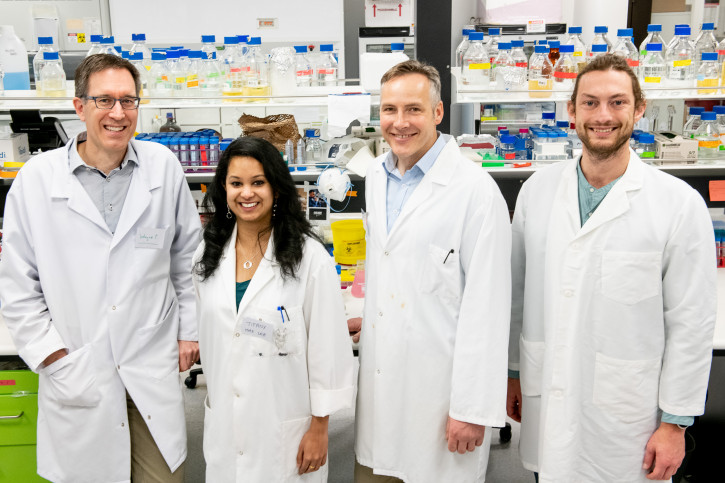Because the new ligase enzymes can operate at temperatures between 70°C and 95°C, they are not destroyed when heat is used to unfold the three-dimensional miRNA knots. The result will be a more accurate picture of miRNA populations, which will find application in a range of fields from disease diagnosis in humans, the primary industries, and the burgeoning international miRNA research field.

Every cell of the body contains a population of tiny RNA molecules—only 20-24 nucleotides in length—that regulate gene expression. They are known as microRNAs (miRNAs). In chronic diseases, such as cancer and heart disease, these populations often become dysregulated. Sequencing them offers the potential for early diagnosis and personalised treatment. Outside of human health, plants and animals also have their own suites of miRNAs. Sequencing them is important for applications such as managing livestock health or understanding crop responses to global warming.
The ability to understand and sequence these diverse miRNA pools is hampered when they fold into complex, three-dimensional knots, because the ligase enzymes used to prepare them for sequencing are unable to bind effectively. These knots can be unfolded at elevated temperatures but, because heat destroys the ligase enzymes, they still cannot be sequenced. The impact is that preparation steps done at lower temperatures—where ligase enzymes are typically active—introduce bias towards some miRNA molecules, so the sequencing data that result do not represent the true miRNA composition of the original sample.
Researchers at Te Herenga Waka—Victoria University of Wellington and the University of Waikato have jointly discovered several novel thermostable RNA ligase enzymes that can function at extremely high temperatures, while the miRNAs are unfolded. This enables the preparation of miRNA pools for sequencing that are a true representation of the samples from which they were derived. This opens the path to new research opportunities and facilitates the use of miRNA sequencing as a molecular tool for the diagnosis of chronic disease.
Next Steps
The Wellington UniVentures team will engage with end users (academic and health technology labs) to validate understanding of technical drivers, current market dynamics, and future market potential. Engagement with reagent suppliers and sequencing companies will be used to understand the value of the asset and identify a channel to market.
Initial feedback from end users and market players highlight the need for a prototype system to be designed and fully costed to establish the cost of market entry and potential margins.
Ultimately, the hope is that this breakthrough is adopted broadly, wherever miRNA populations are of interest. This includes the medical profession, for use in both the diagnosis of disease and the identification of treatment-resistant cells to enable personalisation of treatment. For now, the focus is on its use as a tool to characterise miRNA populations.
Wellington UniVentures is looking for a commercial partner—likely in laboratory reagents—interested in acquiring this technology or combining it with existing technology.
Features and benefits
Operation at higher temperatures
Elimination of bias
Being able to unfold and sequence complex miRNA knots eliminates bias by ensuring the sequencing results truly represent the sample.
Works with all miRNA molecules?
The new enzymes work with every miRNA molecule that has been tested to date, including ones that have been synthesized specifically to knot tightly, leading to the ability to accurately characterise any miRNA population.


